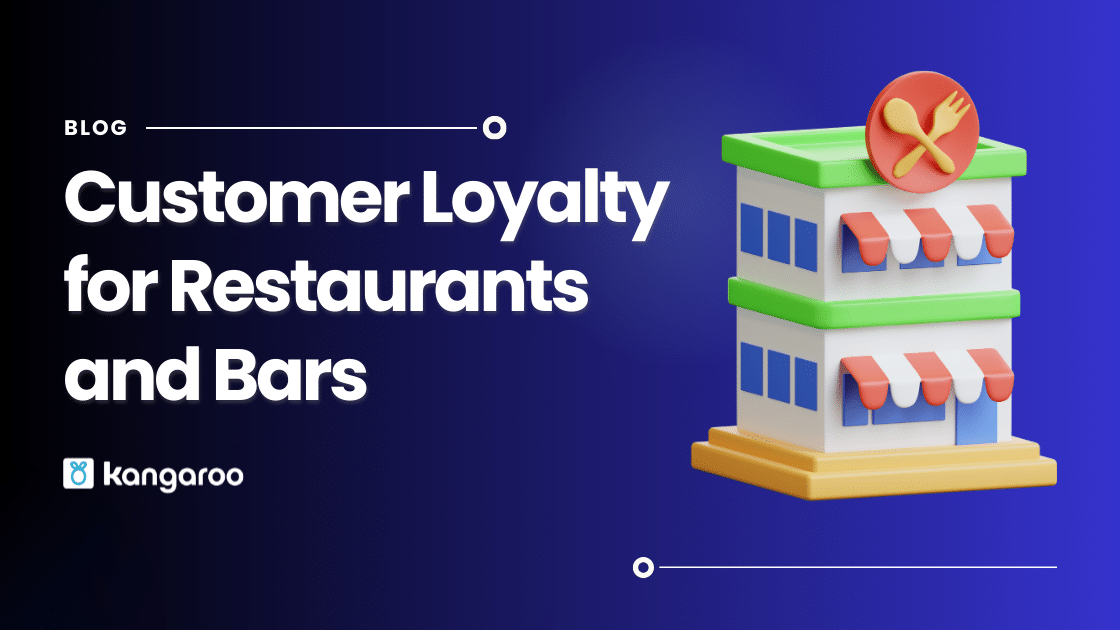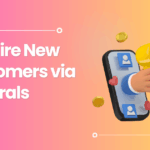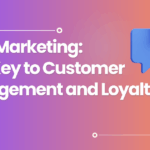Running a restaurant or bar is about more than serving great food and drinks—it’s about creating experiences that make guests want to return again and again. In today’s competitive hospitality landscape, customer loyalty can make or break your business. With rising food costs, shifting consumer habits, and the constant competition for diners’ attention, building a strong base of repeat customers is one of the most reliable ways to ensure sustainable growth.
In this article, we’ll explore why customer loyalty matters so much for restaurants and bars, the challenges businesses face, and proven strategies you can implement—backed by real examples. Whether you’re running a neighborhood café, a cocktail lounge, or a multi-location restaurant, a well-designed loyalty program can help transform one-time visitors into regulars.
Why Customer Loyalty Matters in Restaurants and Bars
Hospitality is one of the toughest industries when it comes to retention. Research shows that:
-60–70% of new restaurant customers never return.
-It costs 5x more to attract a new guest than to retain an existing one.
-Loyal customers spend 67% more on average than new customers.
Think about your own experiences: maybe there’s a café you stop by every morning for coffee, or a bar where the bartender knows your drink order. That’s the power of loyalty—it’s emotional as much as transactional.
For restaurants and bars, loyalty is not only about repeat visits. It’s about:
-Increasing average check size (ordering appetizers, desserts, or premium drinks).
-Boosting visit frequency (coming back weekly instead of monthly).
-Driving referrals (loyal guests bring friends, leave glowing reviews, and share on social media).
In other words, customer loyalty isn’t just “nice to have.” It’s the backbone of profitability.
The Unique Loyalty Challenges Restaurants and Bars Face
Unlike retail or e-commerce, the hospitality industry has unique hurdles when it comes to retention:
-High competition – Diners have endless options. From fast-casual spots to fine dining, the choices are overwhelming.
-Low switching costs – Guests can easily try a new place without much thought. A bad experience can mean losing them forever.
-Thin margins – Restaurants often operate on margins as low as 3–5%. Keeping guests coming back is essential to staying profitable.
-Inconsistent customer data – Many restaurants don’t collect guest information, making it harder to personalize offers or re-engage lapsed customers.
That’s why structured loyalty programs are so powerful. They turn casual guests into repeat customers by rewarding behavior, collecting data, and creating a cycle of engagement.
The Benefits of a Loyalty Program for Restaurants and Bars
A loyalty program isn’t just a discount card. When designed well, it becomes a marketing engine that:
-Drives repeat business – Rewards motivate guests to choose you over competitors.
-Increases guest spend – Customers are more likely to order extra items to reach rewards thresholds.
-Captures customer data – Collect emails, birthdays, preferences, and order history for personalized offers.
-Encourages referrals – Happy members invite friends, expanding your customer base organically.
-Strengthens emotional connection – Guests feel valued when recognized and rewarded.
For example, imagine this scenario:
-A regular diner earns points for every dollar spent.
-They get a free appetizer on their fifth visit.
-On their birthday, they receive a personalized email with a “free dessert and champagne” offer.
-After bringing a friend, both earn bonus points.
This cycle encourages repeat visits, bigger tabs, and free word-of-mouth advertising.
Types of Loyalty Programs That Work for Restaurants and Bars
Not every loyalty program looks the same. Here are proven models:
-Points-Based Programs
Guests earn points for every dollar spent, redeemable for rewards like discounts, free meals, or drinks.
-Example: “Earn 1 point per $1 spent. 100 points = $10 off your next visit.”
-Visit-Based Programs
Reward frequency rather than spend—great for cafes or quick-service spots.
-Example: “Buy 9 coffees, get the 10th free.”
-Tiered Rewards
Encourage progression with status levels (Silver, Gold, Platinum). Higher tiers unlock better perks.
-Example: “Gold members get priority reservations and exclusive tasting menus.”
-Paid VIP Memberships
Guests pay a small monthly or annual fee for premium benefits.
-Example: $10/month for free delivery, exclusive events, and 10% off all food.
-Referral Rewards
Encourage loyal guests to bring friends.
-Example: “Refer a friend, and you both get $10 off your next visit.”
-Gamified Experiences
Add fun with challenges, digital scratch cards, or “spin the wheel” promotions.
-Example: Win free appetizers, bonus points, or cocktails.
Best Practices for Loyalty in Restaurants and Bars
A successful program needs more than rewards. Here are key tips:
-
Keep It Simple – Guests shouldn’t need a manual to understand how to earn and redeem rewards.
-
Go Mobile – Loyalty apps and digital wallets make it easy for customers to track points and redeem offers.
-
Integrate with POS & Online Ordering – Automatic point tracking ensures staff don’t have to manage manually.
-
Personalize Rewards – Use customer data to offer relevant perks (e.g., wine lovers get wine discounts).
-
Promote Everywhere – At the table, at checkout, on social media, and via email/SMS.
-
Celebrate Milestones – Birthdays, anniversaries, first visits, and 10th visits are perfect moments to delight.
-
Train Staff – Your team should actively promote the program and explain benefits to guests.
How Technology Powers Modern Loyalty
Gone are the days of punch cards. Today’s loyalty programs are powered by digital tools that integrate seamlessly into restaurant operations:
-POS Integration – Automatically award points at checkout.
-Mobile Apps – Customers track points, get offers, and order online.
-Geo-Targeting – Send push notifications when a customer is near your bar.
-AI Personalization – Offer tailored deals (e.g., “Your favorite IPA is on tap today!”).
-Email & SMS Automation – Re-engage lapsed guests with timely offers.
Kangaroo Rewards, for example, helps restaurants and bars launch branded apps, manage points, send personalized campaigns, and measure ROI—all in one platform.
Measuring the ROI of Loyalty Programs
You can’t improve what you don’t measure. Key metrics to track include:
-Repeat Visit Rate – Percentage of customers who return.
-Average Spend per Visit – See if loyalty members spend more.
-Customer Lifetime Value (CLV) – Total revenue per guest over time.
-Redemption Rate – How often rewards are claimed (shows engagement).
-Referral Growth – Number of new customers gained from referrals.
Even a small increase in retention can yield huge returns. According to Bain & Company, increasing customer retention by just 5% can increase profits by 25–95%.
Future of Restaurant and Bar Loyalty
Looking ahead, loyalty will become even more personalized and digital:
-AI-driven recommendations will offer hyper-personalized rewards.
-Experiential rewards (VIP tastings, chef meet-and-greets) will matter more than discounts.
-Sustainability-based rewards (eco-friendly perks, charitable donations) will resonate with younger diners.-
-Cross-partner loyalty (earn points at multiple local businesses) will create community ecosystems.
Restaurants and bars that embrace these innovations will stay ahead of the curve.
Final Thoughts
For restaurants and bars, loyalty isn’t just about discounts—it’s about building lasting relationships with guests. A smart loyalty program encourages repeat visits, increases spend, and transforms customers into brand advocates.
By combining delicious food, excellent service, and a well-designed rewards strategy, you create a recipe for long-term success. Platforms like Kangaroo Rewards make it simple to launch and manage loyalty programs tailored to your business, giving you the tools to compete with big chains while staying true to your brand.
If you want to keep your tables full, your bar buzzing, and your guests coming back again and again—invest in loyalty.



